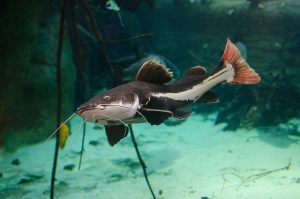Dr. Hubert Kuerzinger, Senior Scientist Nutrition,
Tetra Global R&D Center Nutrition
 Types of marine foods
Types of marine foodsThere are a variety of different food types available for feeding marine fish, and it is important to make the right choices to ensure your fish get the balance of nutrition they need. We conclude our series with a discussion on dry food. You may catch up with previous sections on Marine Gel food, frozen food or live food online.
For freshwater fish, dry foods are widely available and generally well- accepted by the fish. For this reason, they form the main part of the diet, with frozen or live foods being offered as treats. The advantage of a high quality dry food is that, provided it is formulated and produced correctly, it will deliver a balanced diet containing everything needed by the fish. This removes the need for feeding lots of different food types, or for trying to supplement the diet (which is never a scientifically accurate process).
Dry foods are also convenient and, if well produced, will result in very little waste. The major drawback is that not all marine fish will eat them, although this situation is improving as more and more diets are reaching the market. As with freshwater fish, marine fish keepers are increasingly being advised to feed a dry food as the main part of the diet, with frozen foods used to provide additional variety.
Through improvements in diets, coupled with better advice on which fish adapt best to dry foods, it is therefore becoming easier to provide a balanced diet to marine fish.
Because feeding marine fish is not always as straightforward as feeding freshwater species, it is important both to check on requirements before purchase, and to ask about what the fish has been fed while in captivity. If you want to keep things simple, choose species that are not overly fussy, and that are likely to take a dry diet.
To see the complete line of Instant Ocean nutritional products, visit www.instantocean.com
